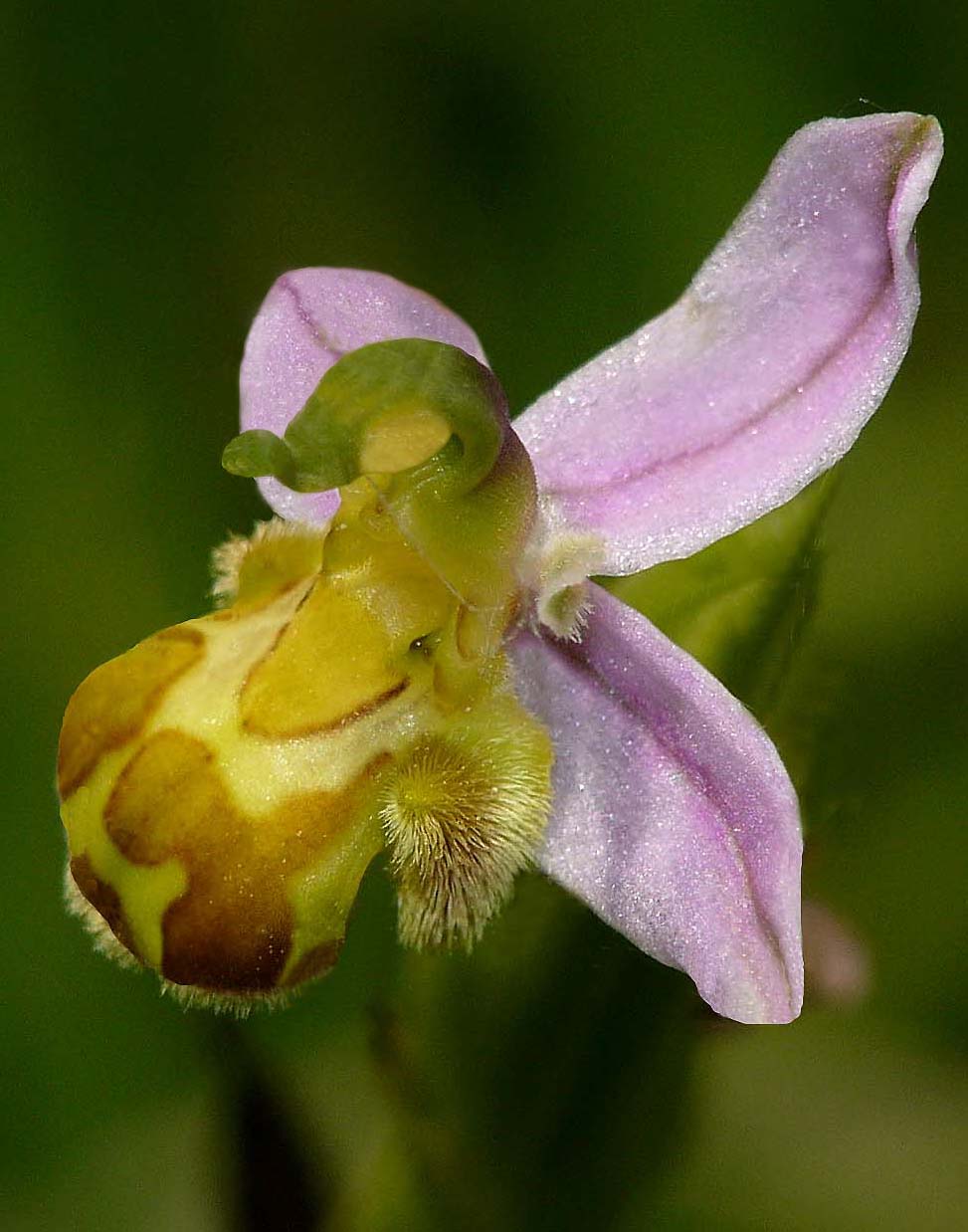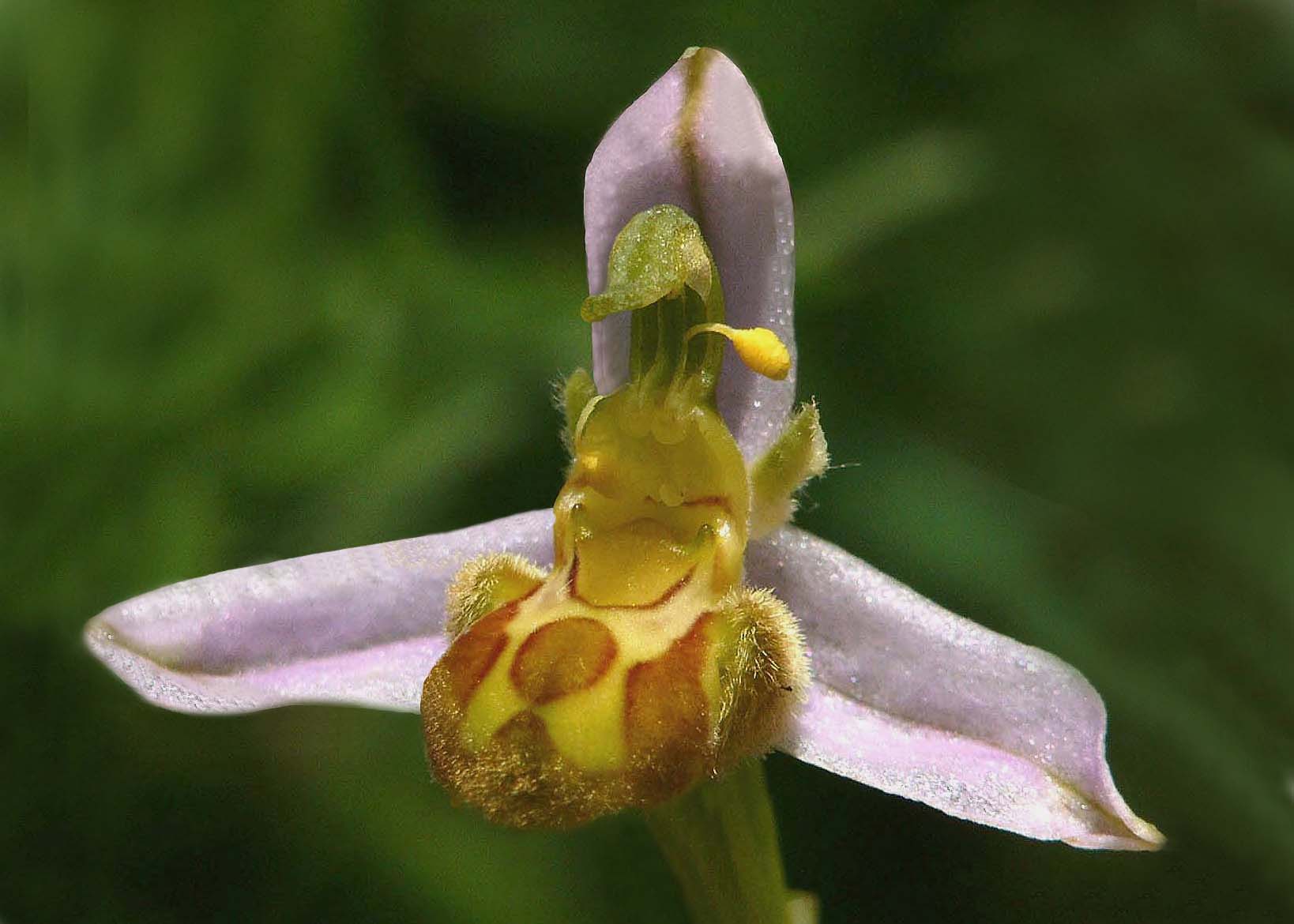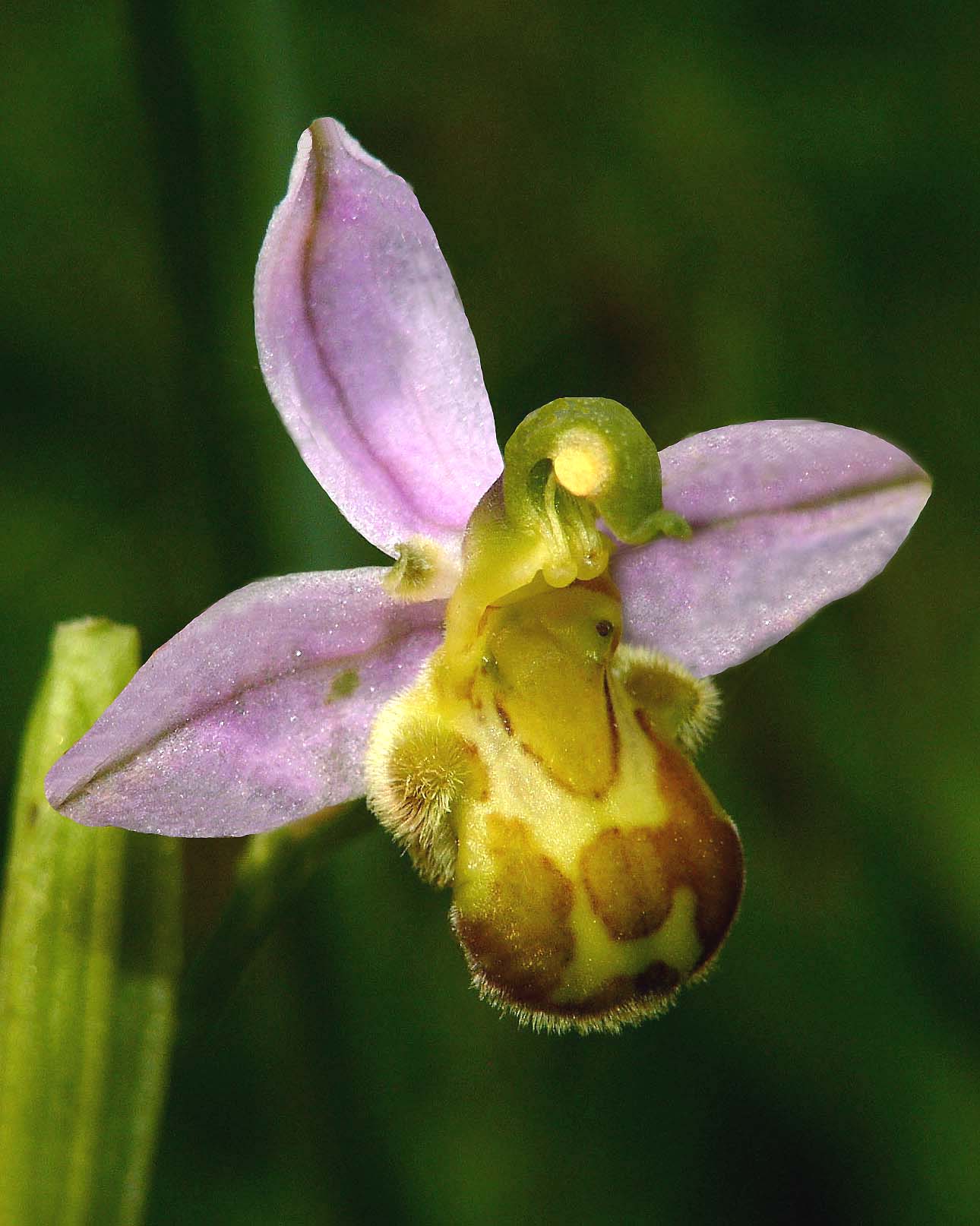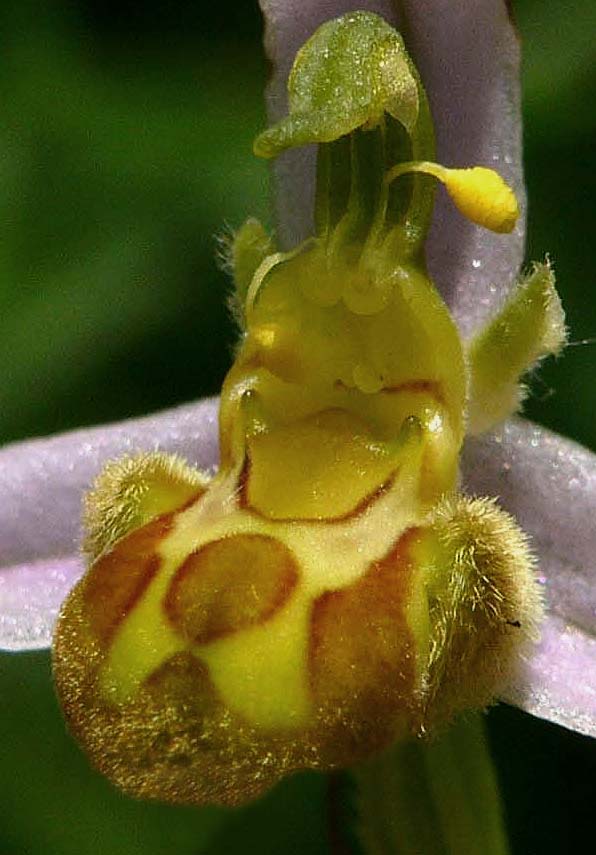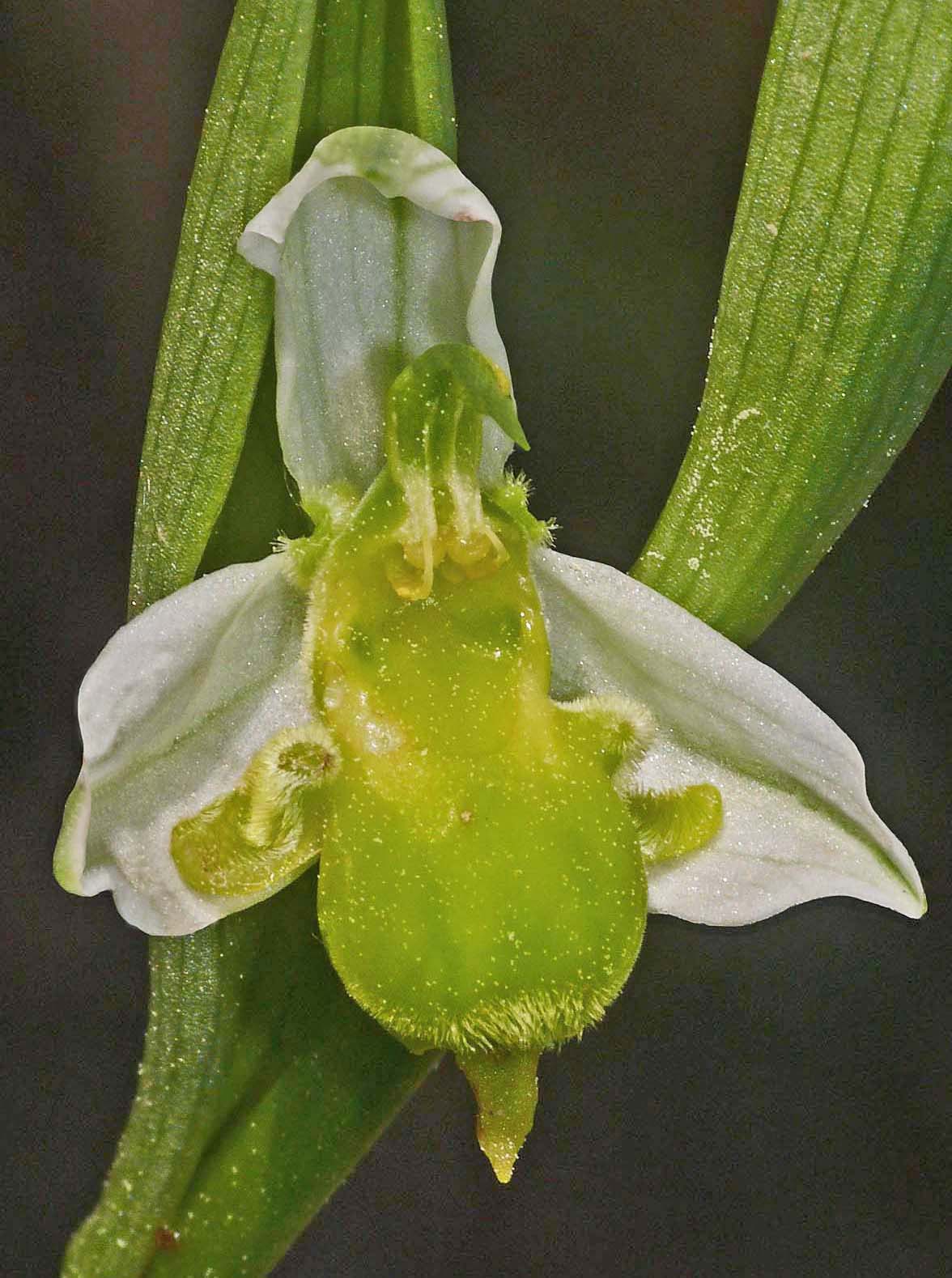It's a widespread orchid with a distribution across temperate and Mediterranean Europe as far east as the Caucasus. In its favoured locations it can be abundant and its choice of habitat is wide, ranging from the driest chalk grassland and garrigue to wet even swampy conditions. It prefers full sun positions but will tolerate (though not relish) even significant shade. O. apifera is largely self-pollinating and this autogamy seems responsible for the frequent appearance of variant plants, some of which, although not of evolutionary significance occur on a sufficiently regular basis to have acquired formal varietal status.
O. apifera v flavescens was first described by Rosbach as long ago as 1880 and is one of the less common variants although it occurs throughout the range of the type species. Its appearance is highly distinctive and although general shape and configuration is normal, the lip colour is very different. It is clearly the result of a hypochromatic condition that reduces pigmentation but unlike the very marked bleaching effect that can be seen in O. apifera v chlorantha , in this variety the result is simply to fade the lip into an indistinct yellowish brown colouration. This should not be confused with the usual fading process of a normal but declining flower.
The illustrations accompanying this page come from the Purbeck Hills of Dorset (UK) and date from the 28th of June. The final picture depicts a fully hypochromatic example for the purposes of comparison.
